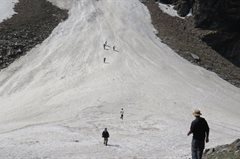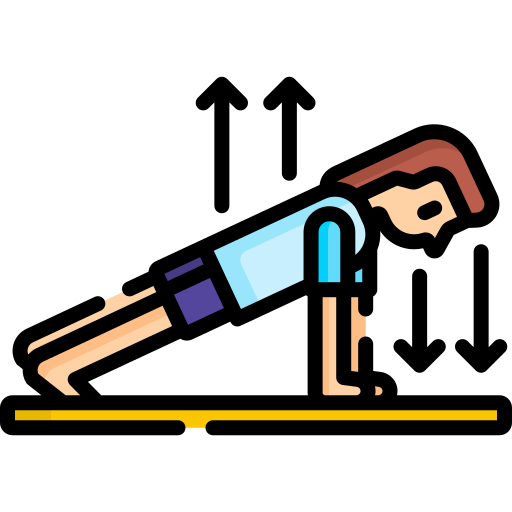Rupin Pass Trek
The Grandest Cross-Over Trek of India
Available Batches



Brief Description
Brief Itinerary
Detailed Itinerary
Day 1
Make Your Way from Shimla (2,276M) to Jiskun (2,099M)
Distance: 198 kms
Duration: 9-10 hours
If you have signed up with Bikat for a drive from Shimla to Jiskun, the day starts early. Everyone assembles at the meeting point by 7 in the morning so we can start our long drive up to Jiskun – a charming agricultural village in the Shimla district of Himachal Pradesh. Although there’s nothing more on the agenda for today other than the 10-hour drive, it is better to leave as early as possible for two reasons:
One, so we can reach as early as possible and give our bodies enough rest for what’s coming the next day. And, two, roads on the mountains are unpredictable and it is always better to account for delays when we start. It is also better to reach before it gets dark.
Day 2
Jiskun (2,350M) to Jhaka (2,750 M)
Distance: 6-7 kms
Duration: 4-5 hours
The trail for today snakes up in a continuous ascent through dense forests after passing through the traditional high-altitude villages of Himachal Pradesh. Once we cross the last signs of habitation, we cross over a small wooden bridge and head on upwards towards our destination for today.
Day 3
Jhaka (2,750M) to Dhanderas Thatch camp (3,566 M) via Saruwas Thatch (3,280M)
Distance: 11-12 kms
Duration: 8-9 hours
Today’s trail takes us all the way down to the river to walk alongside its beautiful blue waters as we follow all its curves and bends. The thicket of fir forests quickly transforms to patches of snow. On crossing these, a snow bridge and a wooden bridge, we hop and jump over some boulders and streams to enter another magical forest – this one rich in rhododendrons of varied hues.
A few more kilometers and we reach Saruwas Thatch– a massive field of meadows rich in all kinds of fresh colours. A little rest here and we push on towards Dhanderas Thatch which s only a short distance from here. Don’t mistake short for unexciting, however because this might as well be the best day of the entire trek which offers some of the most beautiful landscapes. This short walk on the colourful meadows takes us straight to the foot of the roaring Rupin waterfall which doubles up as our campsite for today. The magnificence of this trek is the constantly changing scenery – while the first day took us through fir forests, the second through rhododendrons, today we walk through the luminescence of silver oak trees until we end up at the campsite for the day – Dhanderas Thatch.
Day 4
Rest Day
This day can be used as a rest or buffer based upon the weather conditions and participants fitness. This day can be used at any camp and is at the discretion of the Trek Leader.
Day 5
Dhanderas Thatch camp (3566 m) to Upper Waterfall camp (4080 m)
Distance: 4 kms
Duration: 3 hours
Today’s trek is relatively short but exciting! We will be making our way to the top of the Rupin Waterfall. This section is important because it gives you ample time to acclimatize to the changing altitude and prepare for what is to come next.
The morning begins at leisure allowing the trekkers to rest their limbs properly. For about 1 km, the trail is fairly level as you cross several streams on your way decorated with a display of wild flowers and marigolds. The next section is tricky as you reach the snow patches at the base of the waterfall. This is when your snow equipments like trekking pole and ice-axe would come into play. The trek on snow is particularly challenging as the trail is steep and narrow in many sections. This continues for the next 1.5 kms before you reach the meadow at the top.
The Upper Waterfall Camp is a gorgeous meadow on the banks of a gently flowing stream. You will get to see the spectacular mountain ranges covered in snow and several streams running down through them merging into the Rupin river and disappearing below your feet. While everyone has seen a waterfall closely, only a few can claim to have seen it right from the top and observe it fall down right into the valley. You will one of those lucky few. Capture this moment at the most cinematic location one can imagine. This campsite is a true sight to behold!
Day 6
Upper Waterfall camp (4080 m) to Rupin Pass (4657 m); Rupin Pass to Ronti Gad Camp (4005 m)
Distance: 4 kms + 4 kms
Duration: 6-7 hours + 2-3 hours
This is perhaps the longest and the most thrilling day of the trek. We begin as early as 5 AM and carry packed lunch and breakfast along to reenergize ourselves on the way. The challenges begin to appear shortly after we begin the trek. The ascent to Rati Pheri is a steep incline veering through snow and gains a generous amount of altitude in an hour. The trail climbs over a ridge before reaching the campsite of Rati Pheri.
The landscape changes beautifully at Rati Pheri – a promise best kept by the Rupin Pass trek! The expansive views of the Rupin valley are replaced by the alpine Dhauladar range as you now move ahead over vast snowfields. Your trek leader will provide you with appropriate snow equipments such as microspikes and gaiters depending upon the level and density of snow on the trail. From Rati Pheri, the trek is steep and quite demanding as the snow makes it difficult to trudge through. It is slipper in some sections, while at others the snow may be knee-deep demanding every ounce of your energy to take that next step. All the snow techniques you have learnt so far are put to test and how so. In about 3.5 hours, you will finally reach the base of the Rupin Pass gully. Take some time to rest and rejuvenate for the gruelling trek ahead.
The Rupin Pass gully is a narrow and steep half tube in the mountain side that is prone to lose stones falling over. It stretches over 200 m and would take anywhere between 40 minutes to 1 hour to cover, depending upon the level of snow and the speed of the trekkers.
After a long and steep icy-climb, the sight of the saddle shaped Rupin Pass cutting its way through the Dhauladar Ranges rewards you with a feeling of pure bliss and euphoria. Hundreds of stone cairns and colourful prayer flags adorn the ridge line that offers impressive views of the Kinner kailash range in the north and the Rupin valley in the south. Spend some time at the ridge and relish the eternal glory of the spectacle in front of you.
The next phase of the trek steps up the fun quotient by a notch or three. To reach the Ronti Gad campsite, you get to glissade down the chutes of snow. The descent is sharp and rapid and sliding down the snow slope is the best way to cover the distance.
The slopes even out, after the steep descent, making for an easy walk. Once you cross snowline, be prepared for another sharp descent that leads you to an endless meadow with a stream flowing gently through the mountains. This is the Ronti Gad Campsite. You will be camping here for the night in the vicinity of the towering snow-capped mountains – yet another pleasant change in the landscape around.
Day 7
Ronti Gad Camp (4005 m) to Sangla Valley (2675 m); further to Shimla (2276 m)
Distance: 13 kms + 225 kms
Duration: 5-6 hours trek + 7 hours drive
We begin the descent to Sangla after breakfast, at around 9 AM. The trail is a dusty shepherd’s path as you move out of the Ronti Gad campsite. You may come across mule traffic and shepherds tending to their cattle along the way. Almost 2 hours into the trek, you will see the Ronti Gad valley retreating slowly behind you and the trail ahead opening up to first glimpses of the snow-clad Kinner Kailash range. The sight is an absolute marvel to behold.
Soon afterwards, you will see the first signs of civilization afar in the tiny village of Sangla Kanda. Take a quick break in the Sangla Kanda village and have a hot cup of tea to give yourself some respite from the sharp descent.
The trail from Sangla Kanda to Sangla veers through blue pine forests that come as a refreshing surprise. The trek gradient is a rapid decline over a broad well-defined path going through terraced farms, apple orchards and old stone houses.
As you finally reach Sangla, take one last look at the giant mountains around and bid adieu to one of the finest cross-over treks of the country.
*We will reach Shimla late at night, so make your hotel reservations accordingly.
What's Included
- Food as per menu on the trek (Starting Dinner on Day 1 till Packed Lunch on Day 8)
- Exhaustive First Aid kit including Oxygen cylinder
- Forest Permits/Camping Charges, if any (Upto the amount charged for Indian nationals)
- Dome tents - on twin sharing basis, Sleeping bags, mats
- Micro-spikes, Gaiters, Helmets, if required
- Trek guide, cook, helpers, and porters for carrying common supplies
- Mountaineering course certified Trek Leader with First Aid certification along with special rescue course from NIM, Uttarkashi
What's Not Included
- Portage of personal bags during the trek
- Cost of any kind of Travel Insurance.
- Any Expense of personal nature.
- Any Expense not specified in the inclusions list.
Are you Eligible for this Adventure?
Located at an elevation of 4,650M, Rupin Pass is a moderate level trek which for its difficulty level is suitable for anyone with some prior experience of high-altitudes.
BRS Level Required
This makes it mandatory for you to have high-altitude experience of preferably multiple treks marked at level 3 on the BRS. The altitude, the terrain and the nature of the climb demand a certain level of skill and a need for you to be aware of how your body reacts to the various features of high altitude environment.
If you do not know what level of BRS trek would suit you best, worry not! Fill out this Form:
we will send you a progression chart to help you comfortably get out of your comfort zone in order to level up and ultimately reach your highest potential in the big, bad world of outdoor adventure.
Packing List
This is a list of essential items for individuals doing the trek with Bikat Adventures. This list contains only those items which the participants are required to bring with them. The list excludes those items which are provided by Bikat Adventures on the trek. We have divided the items into five categories. All the items in the list are essential except for those marked as optional.
Trekking Gear
- Ruck sack bag with rain cover. Qty -1
- Day Pack Bag - Recommended for treks with summit day
- Head Torch with spare Batteries. Qty -1
- U V protection sunglasses. Qty -1 Here is how you can choose the best sunglasses for trekking.
- Water Bottles: 2 bottles of 1 liter each
Footwear
- Non-skid, deep treaded, high-ankle trekking shoes Qty -1
- Pair of light weight Slipper/Sandals Qty -1
Clothing
- Quick Dry Warm lower or Track Pants. Qty - 2
- Full sleeves T-shirts/ Sweatshirts. 1 for every 2 days of trekking
- Pair of thick woolen socks. 1 pair for every two days of trekking
- Thermal Body warmer Upper & Lower. Qty-1
- Undergarments. Qty - 1 for every day of trekking
- Warm jacket closed at wrist & neck .Qty-1
- Full sleeves sweater. Qty -1
- Rain wear ( Jacket & Pants ) . Qty-1
- Pair of waterproof, warm gloves. Qty-1
- Woolen cap. Qty-1
- Sun shielding Hat. Qty -1
Toiletries
- Personal toiletries kit (Small Towel, Toilet paper, paper soap, Bar soap, toothbrush, toothpaste, cold cream, etc.)
- Sun screen lotion small pack. Qty -1 Here is your Sun Protection 101 to stay safe in the bright sunny outdoors.
- Lip Balm small pack. Qty-1
Utensils
- Small size, Light weight & Leak proof lunch box. Qty-1
- Plate. Qty- 1
- Spoon.Qty-1
- Tea/Coffee (plastic) Mug.Qty-1
Miscellaneous
- Camera (Optional)
- Carry your medicines in plenty in case you have any specific ailment. Consult your doctor before joining the trek.
- Dry fruits, Nuts, Chocolate bars (Optional)
Frequently Asked Questions
Why Bikat?
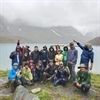

Small Group Size
Our batch sizes are capped at 15 for smaller treks with the trek leader and trekker ratio of 1:8. This ratio, in our years of experience, has proven to deliver the best trekking experience for individuals as well as groups. Capping the size of the group ensures individual attention to each trekker so that no signs of distress or need during the trek go unnoticed. It also helps to form a more cohesive cohort with better group energy which helps define the rhythm and pace of days on the trek. As you go higher up on the BRS scale, since the stakes are higher, expeditions have an even smaller group size with the ratio of expedition leader to climber set at 1:2.


Qualified Trek Leaders
We follow a rigorous regime of hiring and training our experts in the field. Each trek leader is a certified mountaineer with years of experience in the field. In addition to their qualification, they also go through practical and situational training to tackle any and all kinds of sudden conditions that may present themselves on the ground. Being unpredictable is the core nature of the mountains but being ready for any circumstance as best as possible is a controllable asset that we try to nurture. Our field experts are also trained in basic medicine and first-aid response. Watch: Forerunners - The Making of A Trek Leader At Bikat Adventures


Guided Progression
Since Bikat Adventures is a learning-based organization, we help you climb up the ladder of difficulty within the sphere of outdoor adventure systematically. Our on-ground training modules are designed to handhold you through the upskilling process so that you are ready to take on bigger challenges.


Equipment Quality and Check
All the gear used on our treks and expeditions is tried and tested, maintained for good quality, and is overall top-notch in quality and condition. We are continually looking to obtain the best of everything there is in the market so as to ensure optimum safety.


Support Systems
Along with the staff you see on-ground, we have a team of superheroes working in the background to give you the best experience possible. Our background team also comprises local staff from each area who know the region best. Having local support helps with studying the area, pre-planning, execution, and in receiving timely support in case of emergencies in these remote locations.


Communication
Our on-field staff is in constant contact with our teams based in primary locations so as to eliminate any avoidable delay in reaching additional help and support when required. We try to use the best tools for communication available, including satellite phones, in regions where they are not restricted.
What our customers Say
Cancellation Policy
Cash refund
Cancellations up to 60 days prior to departure date
Between 60 days upto 30 days prior to departure date
Between 30 days upto 10 days prior to departure date
Less than 10 days prior to departure date
Voucher refund
Cancellations up to 30 days prior to departure date
Between 30 days upto 15 days prior to departure date
Between 15 days upto 10 days prior to departure date
Less 10 days prior to departure date
- Cash refund is applicable only in case of bookings made without using any promotional offer code or Cancellation Vouchers or Discounts
- This is only a brief of cancellation terms. For finer details please refer Detailed Cancellation Policy.
Blog Posts







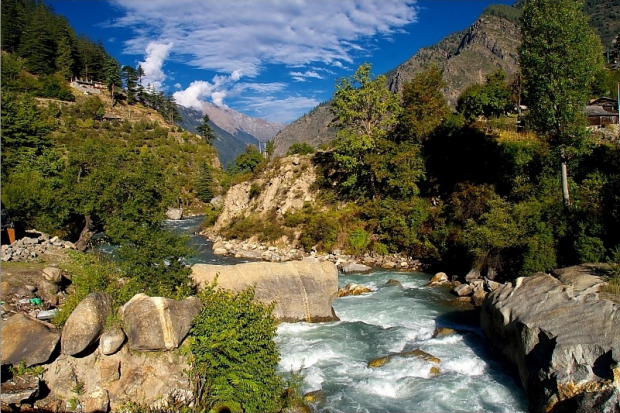
Similar Adventures

Annapurna Base Camp Trek
The perfect mesh of adventure, culture and natural splendor
Nepal
9 Days
BRS 4
4130 m

Buran Ghati Trek
Trek with the most thrilling rappelling experience
Himachal
8 Days
BRS 4
4575 m
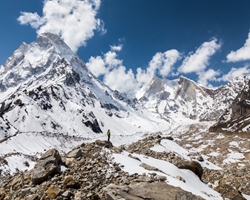
Gaumukh Tapovan Trek
Not just a trek but a journey to the source of River Ganga
Uttarakhand
8 days
BRS 4
4460 m





